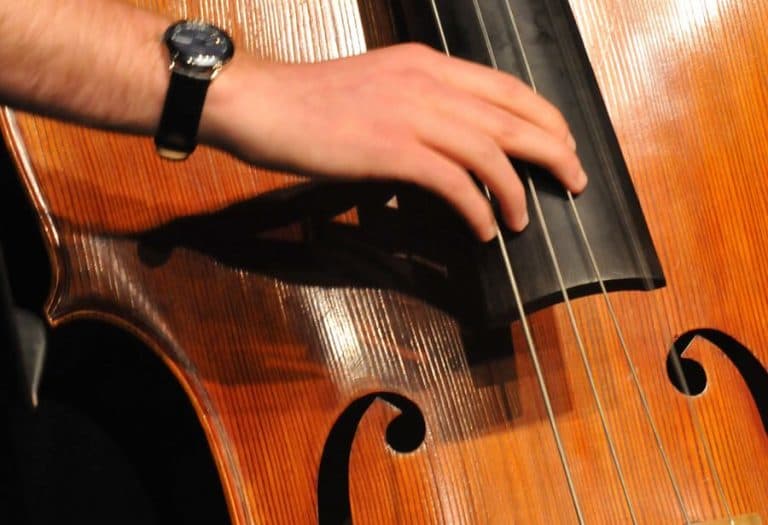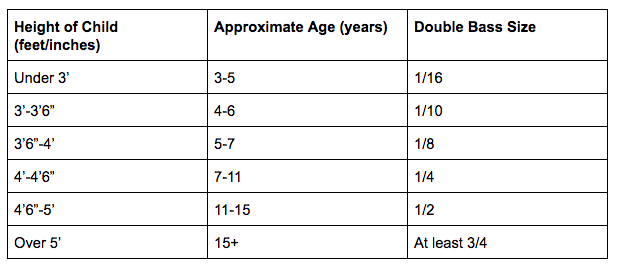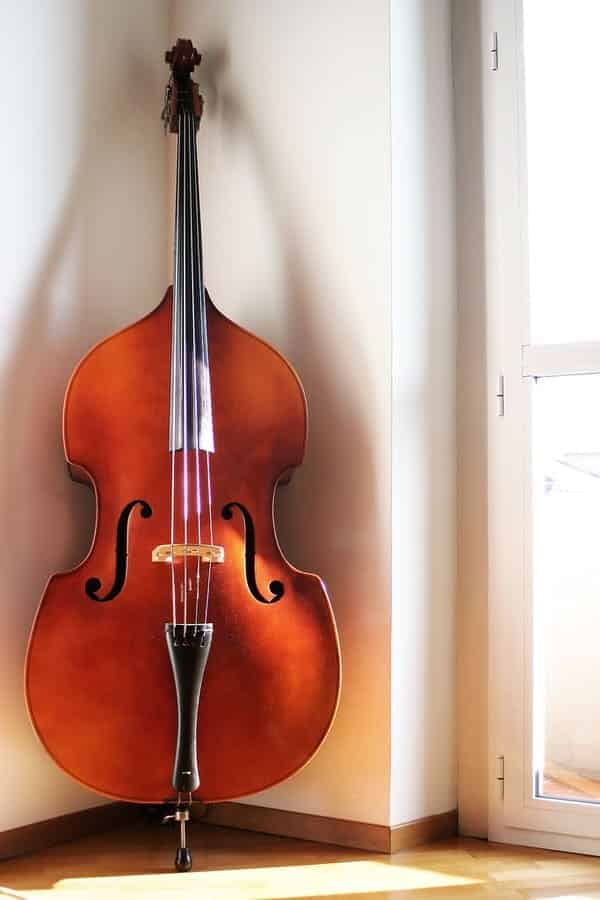How To Choose A Double Bass
Congratulations! You are about to buy your first Double Bass...
Perhaps you have chosen to begin learning the Double Bass? There are so many things to know, therefore we’ve created this straightforward ‘Beginner’s Guide To Learning Double Bass’ collection to assist you along the best path.

Things you should know before buying your first Double Bass
To decide which double bass is best for you, you’ll need to think about what you intend to do with it. I know this sounds like an obvious consideration but double basses vary enormously in terms of size, cost, and sound production. This is great because it will enable you to find an instrument that perfectly suits your particular needs, but to avoid being overwhelmed it’s best to have a clear idea of the following before you start your search:
- What sort of budget do you have? Like all stringed instruments, the very finest double basses can be extraordinarily expensive but don’t be put off by this: it is perfectly possible to find a great instrument at a very reasonable price. However, as with most things in life you get what you pay for- so try to have the largest budget you can afford, and beware of anything that seems too good to be true!
- What type of music do you want to play? The double bass is an incredibly versatile instrument used in all kinds of music across the world from classical orchestral playing to bluegrass, rock, and jazz styles. Most double basses will be set up to work equally well when played with a bow (arco) or when the strings are plucked (pizzicato), making them ideal for students to explore a range of genres. However, if you have a particular musical speciality you can choose a double bass most suited to it.
- Who is going to play it? Double basses are big! However, they come in a huge range of sizes, so you will definitely be able to find one that is just right for you.

What sort of Double Bass should I buy?
First of all, you need to decide which size double bass you will need. Fractional sized instruments have standardised measurements and go right down to one-sixteenth size, making them playable by even the youngest children. At the other end of the spectrum, however, I often tell my students that double basses are like people in that “full-size” can look very different from one to the next!
If you are buying a double bass for a child under five feet tall, start by measuring their height then use the table below as a starting point to give you an idea which size would be best. If you have a teacher, their advice should also be sought in order to find the most suitable double bass for the child to play easily.

You may be tempted to purchase a larger instrument to avoid having to change sizes so frequently, but it is generally better for a child to spend longer on a smaller instrument. Playing the double bass that is uncomfortably large can cause technical problems and even physical injury! If your child is growing rapidly or starting at a young age, you may wish to consider renting an instrument at first in order to facilitate the process of moving up sizes. Several excellent schemes exist, many of which deliver instruments online and might even offer a subsequent discount to customers who then progress to buying an instrument.
If you are buying an instrument for an adult or older teenager, be aware that there is no standard “full-size” measurement for the double bass in the way that there is for the other bowed string instruments. It is perfectly acceptable to remain on a ¾ size instrument forever, especially if you are under around 5’6” in height and/or have smaller hands.
Double basses vary enormously beyond the dimensions of the standard ¾ size, so don’t be put off if the first “full size” double bass you try feels too big! Smaller double bass will often sound clearer in its higher register, making them popular with people who regularly play solo music. As an orchestral musician, I choose to play a very large double bass with a more powerful tone on the lower strings.
Brand New or Second Hand?

My own double bass was made in 1860, and I can trace its history from its maker through several different orchestras and owners to the present day. As well as being a joy to play, it feels like I own a small piece of musical history!
Second-hand double basses are therefore by no means inferior. Like all stringed instruments, double basses can appreciate in value over time: the more they are played, the more consistently the wooden body of the instrument responds to the pressures placed upon it. Provided it has been well looked after by its previous owner(s), a “tried and tested” instrument at any level can be a good investment.
On the other hand, buying a new instrument can provide a greater level of security for the buyer and usually offers more consistent build quality, particularly at a beginner-intermediate level. There are several brands available- Stentor, Zeller, Hidersine, and GEWA are some of the better known. These basses are produced with the particular needs of students in mind, and can be easier to play on when compared to older instruments, which sometimes need a bit of coaxing!
Whatever you buy, be sure to confirm with the seller that it has been fully set up and will be ready to play when you receive it. This is particularly important with brand new instruments. The feet of the bridge need to be specially carved or sanded to fit the particular shape of the front of the double bass, the soundpost inside the double bass needs to have been put into position, and the strings should be wound on inside the pegbox. Ensuring this will save you a costly trip to an instrument restorer before you play your first note!
About the Author
Hugh Richardson
Hugh Richardson is a bass player and writer currently based in London, UK. Recently, he has been busy playing on West End shows and tours including Bat Out Of Hell The Musical, Kinky Boots and Priscilla. When he's not performing, he is probably teaching or spending time perfecting his table tennis game!
You can find out more about Hugh from www.onlinebassguitar.com
Other posts by this author
You can find out more about Hugh from www.onlinebassguitar.com
Types of music
Most double basses are set up to play classical music readily. Some brand new double basses will come as an “outfit” complete with a bow but sometimes you may have to purchase one separately. If your bow is brand new don’t forget to put rosin on it!
At an advanced level, you may wish to find a double bass where the strings are slightly closer to the fingerboard. This makes it much easier to press the strings down in higher positions needed beyond about Grade 6. Too close, however, and it will be impossible to project the sound, so some compromise will be needed.
Conversely, if you are exclusively interested in jazz, rockabilly, or any other style where the double bass is mostly played pizzicato (plucking the strings), a set-up where the strings are slightly higher above the fingerboard will give you a more powerful sound. You might even want to consider an electric upright, or “stick bass” such as the Yamaha EUB or Stagg models, which offer a set-up complete with amplification specifically designed to suit contemporary styles. They are especially useful if space at home is at a premium, or if you are planning to travel a lot, but they are not designed to be played without amplification and thus cannot replace a traditional upright double bass across all genres of music.
Most players enjoy the best of both worlds. I have even been known to mix classical and jazz styles in the same performance! In these cases, it can help to install a pickup to amplify the pizzicato sounds where needed without losing the expressive quality of the higher register. I use a Realist Copperhead that sits unobtrusively under the feet of my bridge, but other types such as Shadow and Fishman exist, some of which can be clipped onto and off the bridge when required instead.
How To Choose A Double Bass - Summary
Let’s keep things easy…
Use the age and height of the player to determine what size of the instrument to buy, and be aware that children will need to move on to a bigger double bass as they grow.
Make sure that any instrument you buy will arrive fully set-up and ready to play.
Electric double basses are only suitable for popular and contemporary styles of music, but various amplification options exist for double bassists who wish to play across a variety of genres.
I hope this has given you a useful starting point for your research, and good luck with buying your first double bass!
Learn The Four Products In This Weeks Email
Every Friday, I send out a unique email showcasing the four most impressive things I’ve reviewed or used that week.
It could include things like special giveaways or opportunities to have interaction with me, musical instruments, ebooks, gizmos, tunes, fresh techniques/tips, and — not surprisingly — a variety of pleasurable musical stuff I dig up from around the globe.
Get easy access now by pressing below.
Read the next post in this series:




